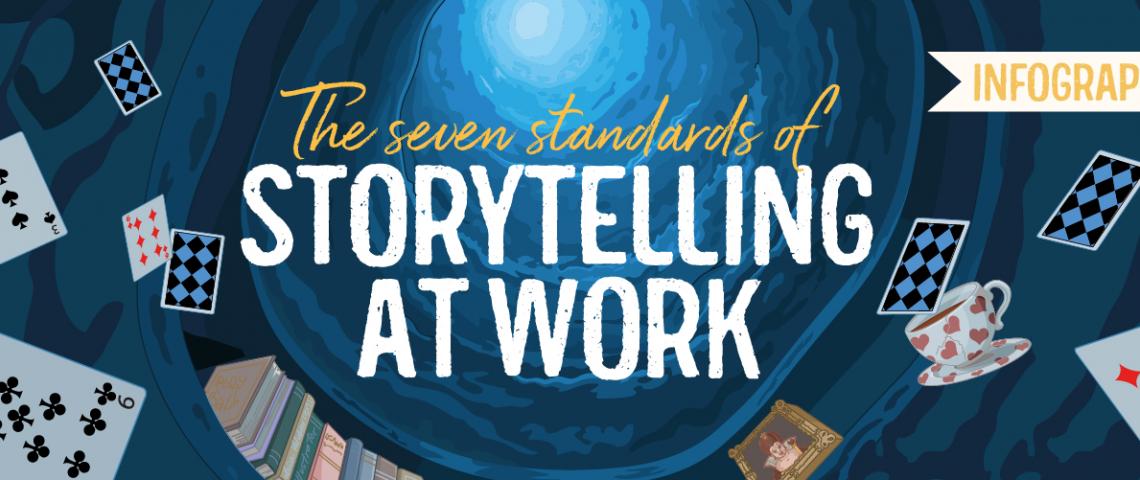The seven standards of storytelling at work

The methods of communication we use to achieve this can be far more compelling if we use stories to bring our point to life because of their emotional, explanatory and persuasive powers.
In internal communication, storytelling has become an essential skill.
More often than not though, we’re pretty unclear about where to start.
We’re using #NationalStorytellingWeek as the perfect opportunity to share our thoughts on this and bring some structure, logic and clarity to your story writing.
In our latest infographic, we share some of the ways that storytelling can be weaved through our organisations with seven simple standards that will help you and your stakeholders communicate in a much more moving and meaningful way.
2018 marks the 18th year of #NationalStorytellingWeek, created by The Society for Storytelling to raise awareness of storytelling and celebrate its incredible benefits.
Use this as your opportunity to boost your skills and create your very own storytelling Wonderland...
Storytelling at work
Stories are powerful.Our brains are more active, more inspired and more engaged when we hear them.So, here’s a question.
Why don’t we do it more? What stops us telling stories that our stakeholders can devour? It’s all about knowing how
Start your storytelling adventure.
Follow out seven simple standards to communicate in a much more moving and meaningful way.
01 Select and collect your stories
- Be a story hawk – explore functions like HR,L&D, social media and marketing to unearth short,factual stories
- Store them in a swipe file
- Know the message you want to share,then search your swipes for a story that illustrates your point
02 Make them personal
- Highlight a major challenge or valuable lesson learned from growing up
- Feature a hero they can connect with – the most compelling stories have a key character who is positive and evocative yet fallible
03 Make them interesting
- Include conflict or struggle to make you stories more absorbing
- Break a pattern with unexpectedness – withhold key information to the last minute
- Hook their attention by parachuting into the story with your best bit
04 Make them relevant
- Make your character or situation easily identifiable
- Bring business context using a story bridge like “Here’s the point…”
- Focus on universal themes – hope, Jealousy, self – doubt, vnlnerability, fear of failure, death or love
05 Make them emotional
- Emotions play a key role in behavior change because they drive decision making
- Employees hunger for emotional engagement at work – use storytelling to deliver it
- Unite a rational idea with a positive emotion like pride,hope or joy
06 Refine your structure
- Follow Hollywood’s there acts approach – situation, complication, resolution
- Work backwards – devise your ending before you work on the rest. Endings are hard, but crucial
07 Polish your stories
- Follow the Goldilocks Principle of story development – keep the amount of detail ‘just right’, not too much and not too little
- Keep your stories honest and simple using real language
- Practice – with confidence and passion
Never underestimate the value of stories – they present a golden opportunity to engage, influence, persuade and create meaning. Play your cards right and you’ll be expertly weaving stories throughout your communication. Create your very own story wonderland.
This article was made by Alive With Ideas and published on alivewithideas on January 19 2018 EGN has gotten the right to share it from the author.
